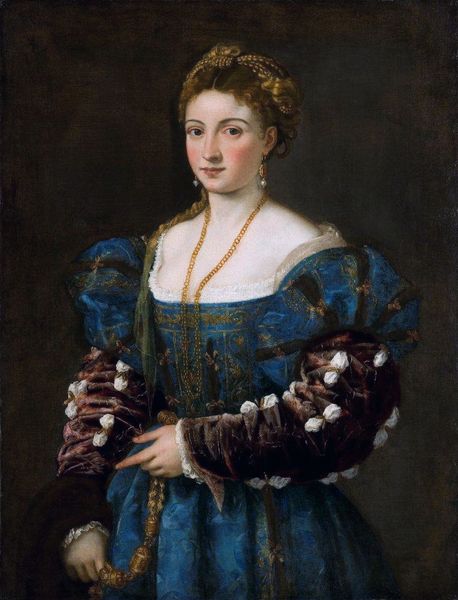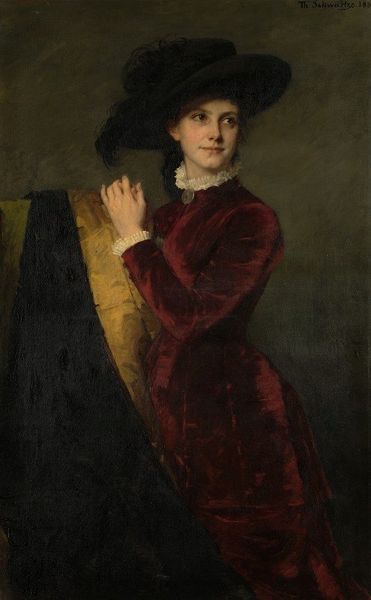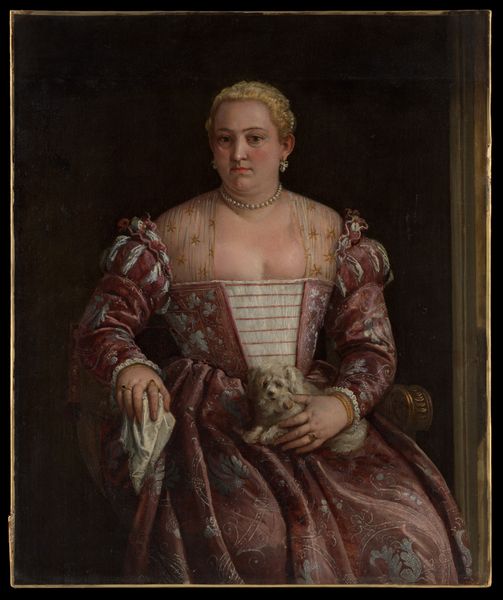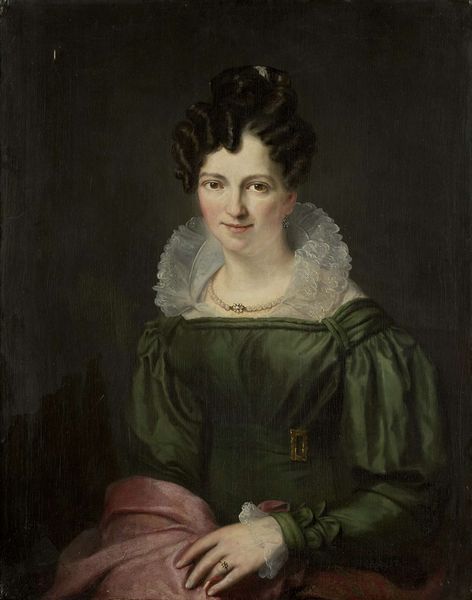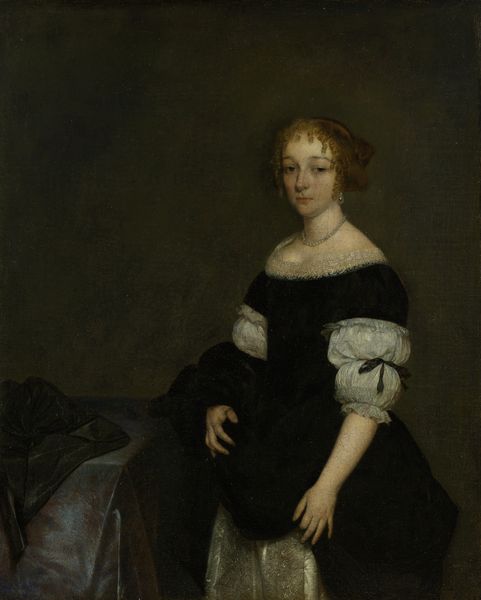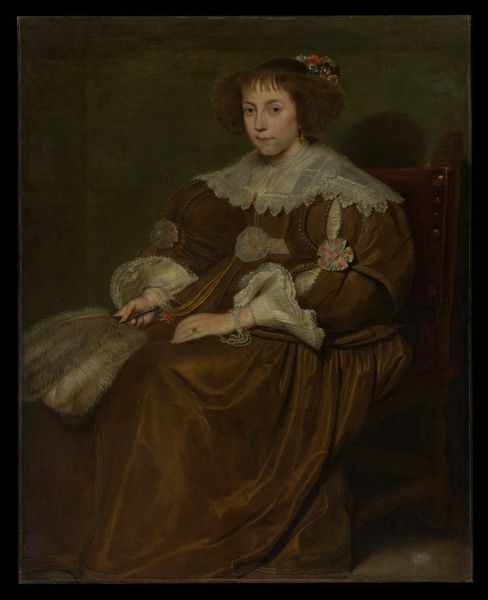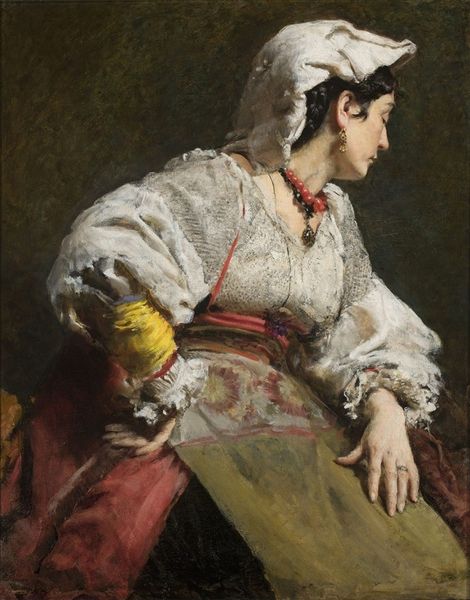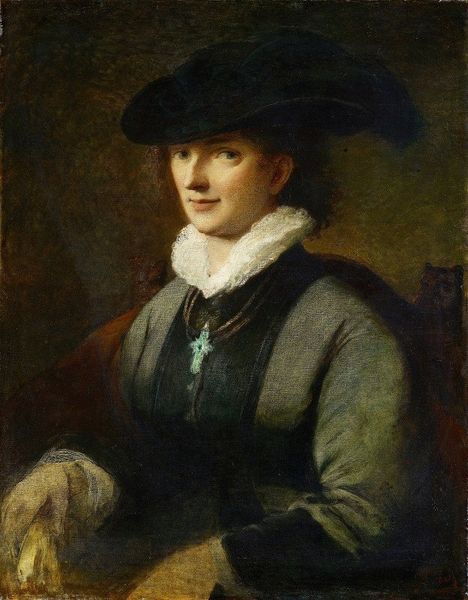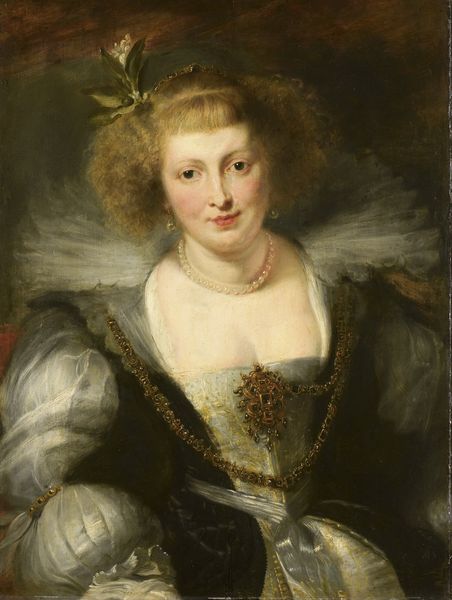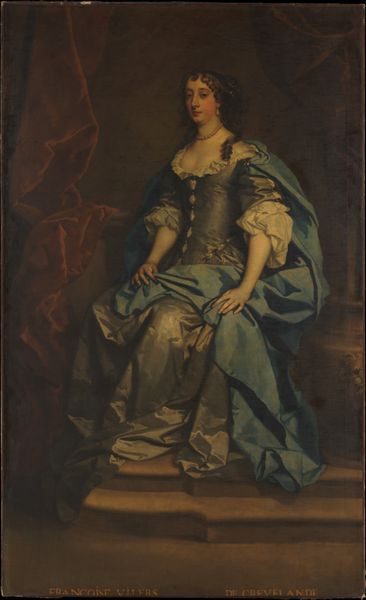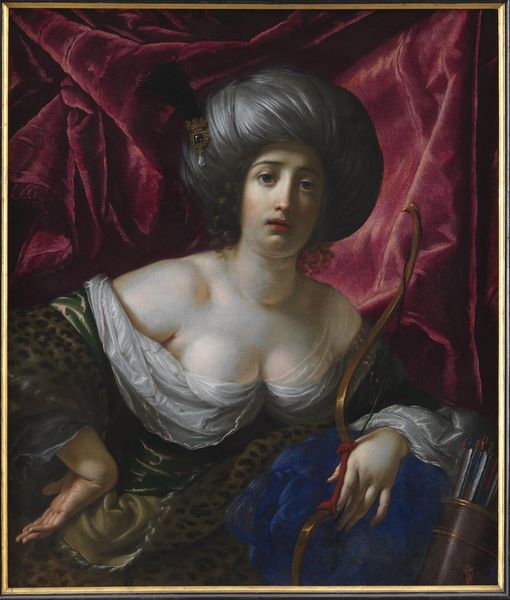
oil-paint, oil-on-canvas
#
portrait
#
portrait image
#
portrait
#
oil-paint
#
figuration
#
portrait reference
#
portrait head and shoulder
#
united-states
#
animal drawing portrait
#
portrait drawing
#
facial portrait
#
academic-art
#
oil-on-canvas
#
portrait art
#
fine art portrait
#
realism
#
celebrity portrait
Dimensions: 30 x 25 in. (76.2 x 63.5 cm) (canvas)39 1/2 x 32 3/4 in. (100.33 x 83.19 cm) (outer frame)
Copyright: No Copyright - United States
Editor: So, here we have Thomas Eakins' "Portrait of Elizabeth L. Burton," painted between 1905 and 1906 using oil on canvas. It feels very intimate, almost like a candid snapshot despite being a formal portrait. I'm struck by how realistically he captures her expression. What's your take on this work? Curator: Eakins, a staunch realist, was determined to depict his subjects truthfully, regardless of conventional beauty standards. Considering his strained relationship with academic institutions and controversies around nude studies, a portrait like this, of a woman who seems intelligent and self-possessed, challenges the expectations of his era. Editor: In what way? Curator: Well, think about the societal pressures on women at the turn of the century. Beauty ideals were very rigid. Eakins presents us with a person, not a mere representation of ideal womanhood. It’s about individual character. And the somewhat muted palette further supports this down-to-earth realism. Do you get a sense of the sitter's social standing through his choice of clothing and composition? Editor: I see what you mean. Her dress is elegant, but not ostentatious. She doesn't have a lot of flashy jewelry either, and her gaze, it avoids being overtly inviting. Curator: Exactly. Eakins is making a statement about class, gender, and representation itself. The Minneapolis Institute of Art is an excellent location for this piece. It speaks volumes about the values of institutions, what narratives they choose to preserve and how the public interacts with those narratives over time. Editor: It's interesting to see how his personal history and the context of the time really inform how he chose to paint this portrait. It shifts my understanding completely. Curator: It reveals the power of art as social commentary and how even seemingly straightforward portraits can carry significant cultural weight. The nuances and layers become far more engaging once one appreciates the artist's milieu.
